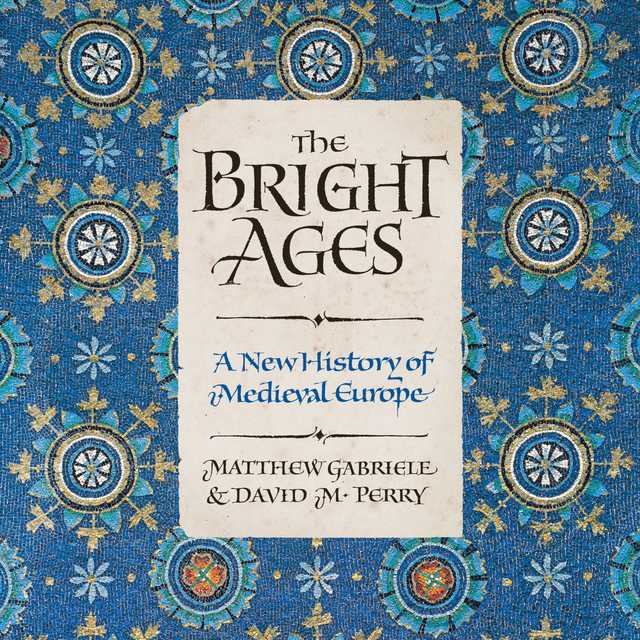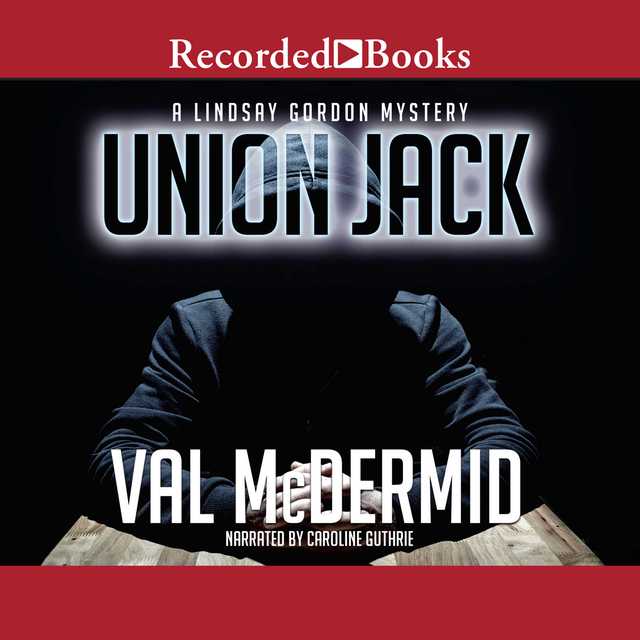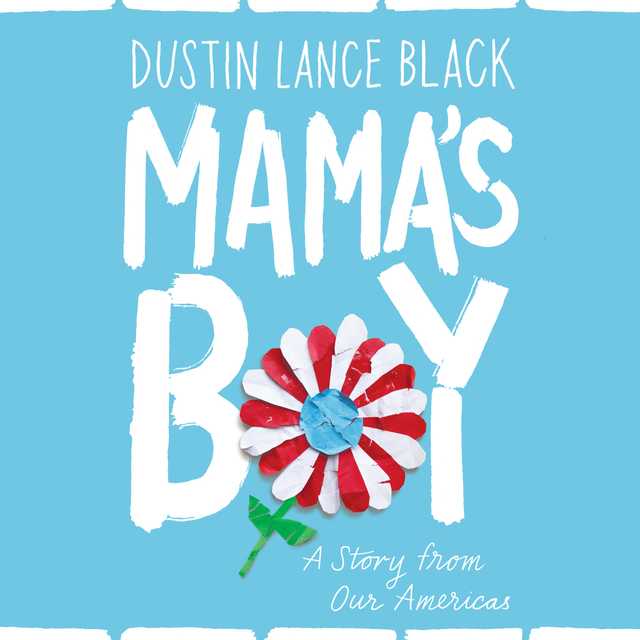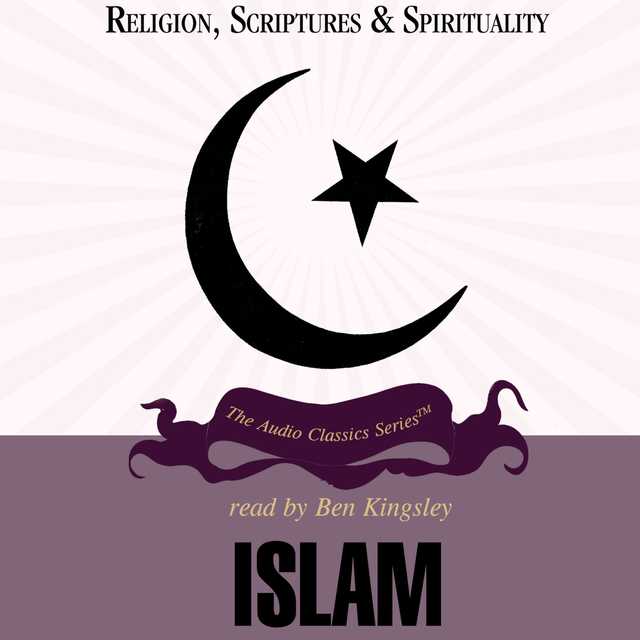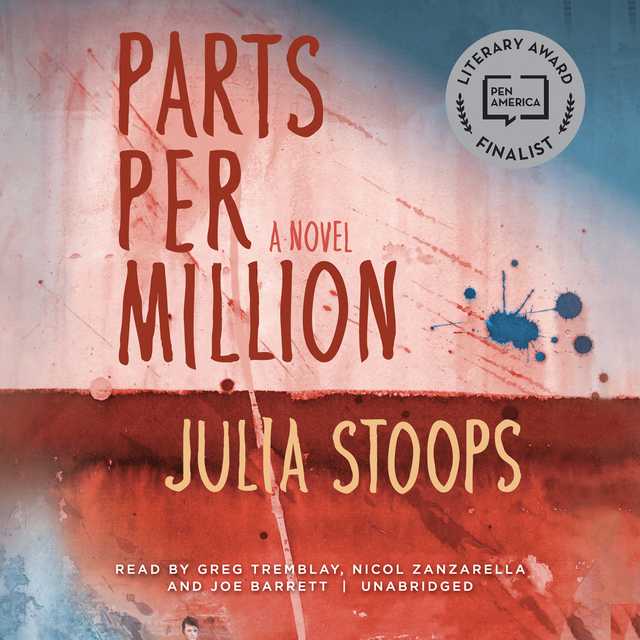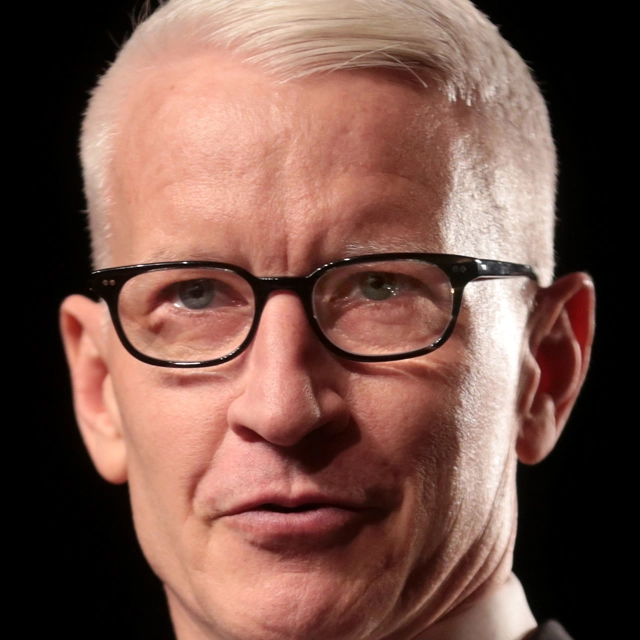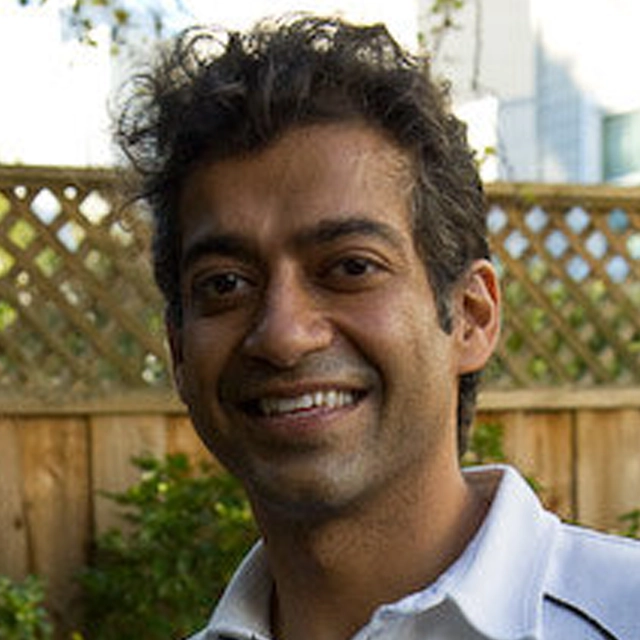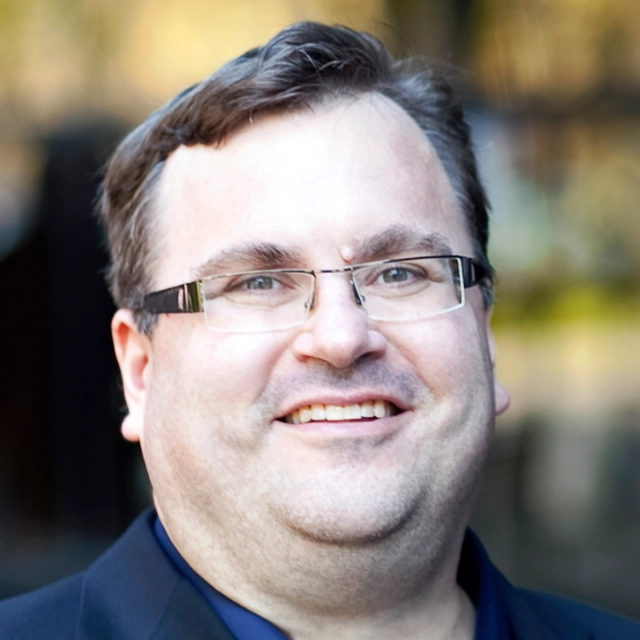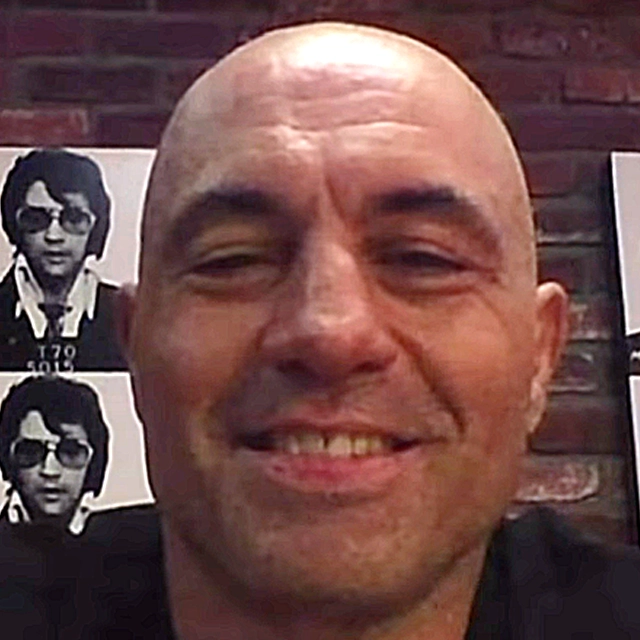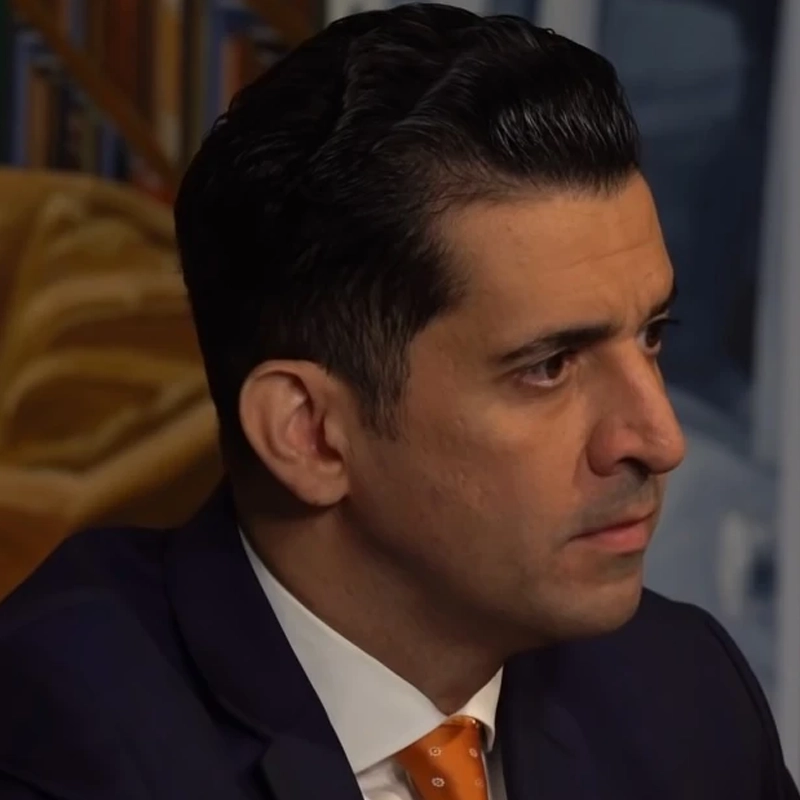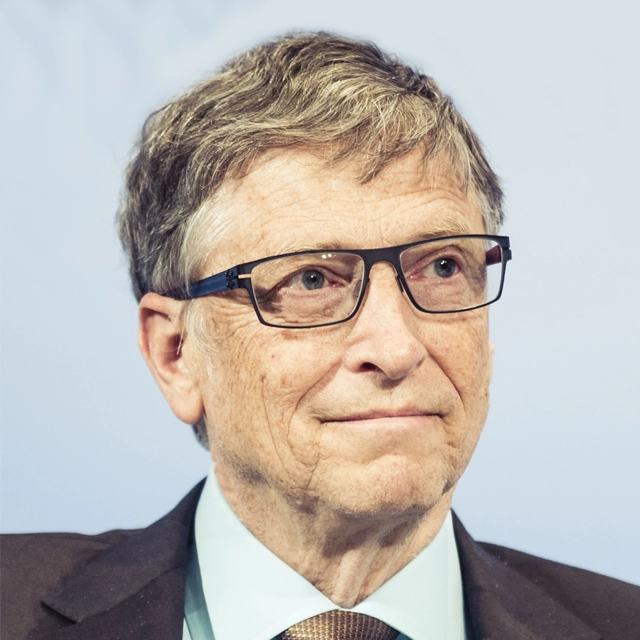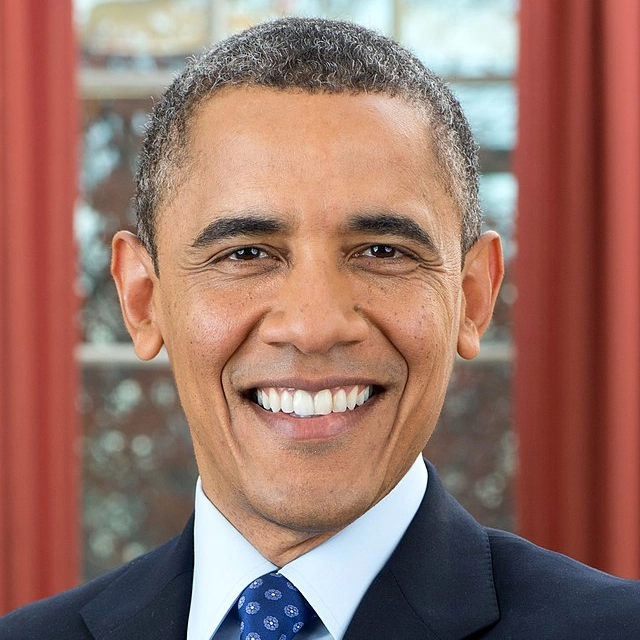The Bright Ages Audiobook Summary
“Traveling easily through a thousand years of history, The Bright Ages reminds us society never collapsed when the Roman Empire fell, nor did the modern world did wake civilization from a thousand year hibernation. Thoroughly enjoyable, thoughtful and accessible; a fresh look on an age full of light, color, and illumination.” –Mike Duncan, author of Hero of Two Worlds: The Marquis de Lafayette in the Age of Revolution
A lively and magisterial popular history that refutes common misperceptions of the European Middle Ages, showing the beauty and communion that flourished alongside the dark brutality–a brilliant reflection of humanity itself.
The word “medieval” conjures images of the “Dark Ages”–centuries of ignorance, superstition, stasis, savagery, and poor hygiene. But the myth of darkness obscures the truth; this was a remarkable period in human history. The Bright Ages recasts the European Middle Ages for what it was, capturing this 1,000-year era in all its complexity and fundamental humanity, bringing to light both its beauty and its horrors.
The Bright Ages takes us through ten centuries and crisscrosses Europe and the Mediterranean, Asia and Africa, revisiting familiar people and events with new light cast upon them. We look with fresh eyes on the Fall of Rome, Charlemagne, the Vikings, the Crusades, and the Black Death, but also to the multi-religious experience of Iberia, the rise of Byzantium, and the genius of Hildegard and the power of queens. We begin under a blanket of golden stars constructed by an empress with Germanic, Roman, Spanish, Byzantine, and Christian bloodlines and end nearly 1,000 years later with the poet Dante–inspired by that same twinkling celestial canopy–writing an epic saga of heaven and hell that endures as a masterpiece of literature today.
The Bright Ages reminds us just how permeable our manmade borders have always been and of what possible worlds the past has always made available to us. The Middle Ages may have been a world “lit only by fire” but it was one whose torches illuminated the magnificent rose windows of cathedrals, even as they stoked the pyres of accused heretics.
Supplemental enhancement PDF accompanies the audiobook.
Other Top Audiobooks
The Bright Ages Audiobook Narrator
Jim Meskimen is the narrator of The Bright Ages audiobook that was written by Matthew Gabriele
Matthew Gabriele is a professor of medieval studies and chair of the department of religion and culture at Virginia Tech. He is the author of the book An Empire of Memory: The Legend of Charlemagne, the Franks, and Jerusalem before the First Crusade, many articles on medieval Europe and the memory of the Middle Ages, and has edited several academic volumes. His public writing has appeared in numerous newspapers and magazines, and interviews with him have aired locally, nationally, and internationally.
About the Author(s) of The Bright Ages
Matthew Gabriele is the author of The Bright Ages
More From the Same
- Publisher : HarperAudio
- Abraham
- American Gods [TV Tie-In]
- Dead Ringer
- House of Sand and Fog
- Prey
The Bright Ages Full Details
| Narrator | Jim Meskimen |
| Length | 9 hours 30 minutes |
| Author | Matthew Gabriele |
| Category | |
| Publisher | HarperAudio |
| Release date | December 07, 2021 |
| ISBN | 9780062980922 |
Additional info
The publisher of the The Bright Ages is HarperAudio. The imprint is HarperAudio. It is supplied by HarperAudio. The ISBN-13 is 9780062980922.
Global Availability
This book is only available in the United States.
Goodreads Reviews
Tim
February 08, 2022
It was interesting to observe the reaction to online articles that accompanied the release of this book. A remarkable number of the comments on these articles were by people who seemed, despite not having actually read the book yet, outraged that it existed. The idea that anyone would characterise the Middle Ages as not simply "not-actually-a-dark-age" but as "the Bright Ages" seemed genuinely offensive to these commenters, with no small number of them taking it upon themselves to list several things from the Middle Ages that were bad (real and imagined), which they seemed to think somehow shattered Gabriele and Perry's thesis. Others were convinced, from what little they knew about the book, that the authors were "right wing traditional Catholic revisionists", determined to rewrite the "true" history of the period in the name of their faith. This was odd, given that other commenters were equally convinced these writers were "left-wing culture warriors", trying to make medieval history "woke". Exactly how they could somehow be both these things is far from clear.Of course, the reason some resist any correction of the negative stereotypes about the Middle Ages is those clichés are deeply rooted in the mythology that underpins the modern western world and founded on prejudices, both cultural and religious, that most people have absorbed since childhood. Accepting that they may actually be wrong is too hard for some. Gabriele and Perry's fairly short but compact and eloquent book, if the naysayers ever bothered to read it, would go a long way toward a more rounded, nuanced and accurate view of a period that is widely misunderstood. As they state in their Epilogue, historians spend most of their time explaining how "it's more complicated than that". This does not mean this is some book of radical revisionism, contrary to accepted historical views. On the contrary, anyone who has studied the Middle Ages here will find nothing much that is new at all and will spend a lot of time thinking "yes, I've been trying to tell people this for years!" Nor do the authors present a sanitised or prettified view of this period, which they actually show warts and all, with its ugly and violent sides as well as the opposite. But the point is that this period of European history is almost always presented with an emphasis on the ugly, the violent and the weird, despite being no more or less ugly and violent than, say, the Roman Period or later centuries. This book is about redressing balance and maintaining a multifaceted view of a time often presented in one dimension (and usually wrongly even then).There is no way historians could fully detail a whole millennium of history in just 300 pages, so each chapter takes a series of illustrative vignettes as a framework for discussion of various themes, though arranged in a generally chronological order. The effect is that they cover a very broad range of ideas in reasonable detail and keep the narrative interesting and often amusing. Again, the stories they choose will be very familiar with medievalists, but likely to be surprising, perhaps, to general readers. Topics that are often presented in polemical and partisan ways - the Crusades, for example - are given a rounded and balanced treatment that helps the reader put aside modern value judgements and preconceptions and look at how and why these events happened. This is about not judging history, even when it is very strange to us. There is a strong sense, particularly from the book's Introduction and Epilogue, that it was inspired at least in part by the way the Middle Ages have been seized upon, utilised and misused in recent political discourse. This includes the way anti-theistic activists present the period as one of unalloyed religious repression and darkness and the alt-right's weird fantasy version of it as a white supremacist wonderland. This means that some of the topical references to things like the 2017 Charlottesville rally, the Christchurch mosque shootings of 2019 and the 2021 Capitol Hill insurrection are going to date fairly quickly. The authors also use the jargon common in American academic and political discourse - "people of colour, "gendered" and "enslaved people" etc. - which, given the way such language changes periodically, could seem dated, quaint or even prim and odd in the not too distant future. This makes this book one that could be somewhat of its time. Luckily the bulk of the contents and insights are fairly timeless.Any book that covers such a broad swathe of time will have details that could be quibbled over. On pp. 27-8 the authors refer to Justinian's closing of the Academy in Athens - an event that many popular writers mischaracterise badly. So it's disappointing that in a book that sets out to set things straight, the Academy that was closed is referred to as "an august school of philosophy with its roots in antiquity". In fact, this was not the Academy founded by Plato, but a much later school which took the same name. It was small, mystical, not especially "august" and not very significant at all. And it was closed because it was vehemently anti-Christian. All that aside, the authors go on to argue this closure was not evidence of Christian anti-intellectualism because Justinian sponsored a new legal system, new engineering etc. That's all true, but a better and more apposite point to make would be that plenty of other schools of ancient learning continued to flourish with the full encouragement of the Church and the emperor, and the closing of the little militantly pagan salon in Athens was not indicative of any imagined "closing of the western mind". This is still often claimed (including just last year in a very popular book by Dan Jones), so an opportunity was missed here.But many opportunities were not missed in this book, but caught and held up to the reader. The repeated references to brightness, light, colour and beauty in the Medieval World are deliberate, deft and culminative. As a counter to the persistent inaccurate Hollywood depiction of this period as one of drab clothing, dark castles and dank hovels, the medieval love of pageantry, bright clothes, decoration and display is emphasised. And the Epilogue gives a good summary of why a period that was actually rich, varied, innovative and fascinating has been unfairly denigrated and misrepresented. The authors are unlikely to have convinced the naysayers noted above, who I doubt will ever bother to read this excellent book. But anyone who does take the time to do so will be well rewarded.
Oleksandr
March 01, 2022
This is a great overview of current mainstream views on the (chiefly European) Middle Ages. There is a great distance between how the general public sees the period, usually still called the Dark ages, and what modern scholars think about it. I read it as a part of buddy reads for February 2022 at Non Fiction Book Club group.The book is a broad general overview of the period. For the people, who are interested in medieval studies there is not a lot of new stuff, but for a wider public, it is a great introductory book. Its definite advantage, that is it just “flashes” fascinating events or persons, so that a reader may seek more about them instead of forcing own historical narrative. Like a lot of works, it starts with debunking ‘Fall of Rome’ narrative, set by the Enlightenment scholars and shows that there were continuous links to Roman past, from (often fake) genealogy of new nobles to the fact that Constantinople was seen by many as a new Rome.Then the author moves to raise of Islam and unification of Arabs, and the city of Jerusalem, a holy place for three religions and the fact that while past historians stressed on conflicts, there was a lot of cooperation. This piece surprised me:IN THE EARLY 1180S, A SYRIAN nobleman wrote a book. More a series of anecdotes than a sustained narrative, the Book of Contemplation by Usama ibn Munqidh portrays a world in which he had only known a Christian Jerusalem (the city was taken when he was four years old). In this world, he both fights against some Franks and counts others as his friends. He recounts one incident, during a visit to Jerusalem, when he prayed at a small mosque adjoining Al-Aqsa on the Temple Mount. Facing south toward Mecca, he was accosted by a Frank who had just arrived in Jerusalem. The Christian Frank, interestingly, didn’t object to this Muslim praying but rather tried to tell the Syrian he was facing in the wrong direction—Christian churches are oriented east–west, with the altar to the east. That’s the direction in which the Christian thought Usama should be facing. Usama was taken aback, flabbergasted. But he was quickly rescued by his friends, who escorted the Frank out, apologized for his behavior, and stood guard so that Usama ibn Munqidh could complete his prayers.It was, of course, fortunate that Usama’s friends were nearby but it’s also not surprising. Al-Aqsa Mosque, known as the “Temple of Solomon” to the Christians, was where the Knights of the Temple—the Templars—called home. Here, an Islamic Syrian nobleman, who throughout his career fought and killed Christian Franks, was, in this case, worshipping in a mosque in a Christian Jerusalem, when he was protected by a Christian religious-military order—a collection of knights vowed to holy war against the enemies of Christ.There are a lot more, from a present of a glorious African elephant to Charlemagne in 802 to Northmen, who not only pillaged and raided, but founded states, from Rus to Sicily, visited North America and loved democracy and literature… where status of women was surprisingly high (compared to later times) and were trade was as important as military adventures.Overall, a very well-written introductory text, but if you’re already well versed in the period there is not many new discoveries.
David
December 19, 2021
This is a collection of vignettes set over the roughly 900 years from 430 to 1321 CE, all aimed to refute the popular idea that the end of "antiquity" was followed by the "Dark Ages" in which people were mired in ignorance and poverty until the Renaissance restored light and learning. Gabriele and Perry highlight a range of interesting (though not always admirable) characters and events from the period they dub "The Bright Ages," an effective rebuke to anyone who buys into the most reductive idea of the "Dark Ages." Casual readers will come away with a more nuanced view of the medieval period, and probably a more positive one. A more informed reader might have a different experience. To list one example I'm familiar with, the book doesn't really engage at depth with some of the more recent scholarly debate about — the "fall of Rome," where contemporary scholars arguing that Rome fell have much more sophisticated and less moralizing arguments than the conventional understanding of the "Dark Ages" that Gabriele and Perry are focused on rebuking. That's fine, and readers who are familiar with the historical Middle Ages will still find plenty to ponder in this book, but as a member of this class I half-wished for a more deeply argued thesis as I read it, even as what was there gave me plenty to think about.
Bruce
December 03, 2021
"A lively, searing, and transformative reimagining of the medieval world, The Bright Ages is brilliant in every way, both lucid in its arguments and sparkling in its prose. A gripping and compulsive read."[my endorsement for the publisher]
Crystal
March 16, 2022
Non Fiction>History>"Middle Ages"This was an awesome overview of 7th century through 14th century history-mostly European but also covering Middle East, Africa, and Asia.This was a buddy read with the Non Fiction Book Group for Feb 2022.This book would be a great starting point for learning more about the Middle Ages, crusades, religions of the time, evolution of Christianity, Judaism, Islam. Below I have given brief overviews of what is covered in each chapter---first I give the Chapter #, then the title of the Chapter in the book, then my summary which could serve as subtitles for the chapters in most cases.I do want to say that the inclusion of a 'bright' word in each of the chapter titles really impressed me. I appreciate when authors put time and effort into the titles of chapters. 1: Shimmering Stars on the Adriatic>>>Galla Placidia; Did Rome really "fall"?; Italy vs Constantinople power centers2: The Gleaming Tiles of the New Rome>>>Establishment of Constantinople as the center of "Eastern Rome" and a new Jerusalem; Justinian and Theodora3: Dawn in Jerusalem>>>Muhammad; Role of Jerusalem in all Abrahamic traditions; Umayyad Caliphate; 4: A Golden Hen and the Walls of Rome>>>Many Christianities and their spread; Pope Gregory; Theodelinda5: Sunlight on a Northern Field>>>7th-8th century Britain;6: A Towering Ivory Husk>>>Charlemagne; continuing evolution of Christianity; Dhuoda's perspective7: A Ship Aflame on the Volga>>>Vikings 9-11th century8: A Golden Girl in France>>>Saint Foy; France and further Christian evolutions9: The Brilliant Jewels of the Heavenly Jerusalem>>>1099 Jerusalem; all the religions are tangled together10: The Sun-Dappled Towers in a City of Three Religions>>>Jews, Christians, and Muslims in Spain; Convivencia vs Reconquista11: Divine Light Reflecting Off the Nile>>>Maimonides12: A Radiant White Hind with the Antlers of a Stag>>>12th Century Renaissance in Europe; Hildegard of Bingen; King Henry II13: Cities on Fire>>>Cathars; 4th Crusade14: Stained Glass and the Smell of Burning Books>>>Blasphemy of the Talmud; Gothic style15: Glistening Snow on the Eastern Steppe>>>12-14th century Khans; Religion in Mongolia region16: Quiet Candles and Falling Stars>>>Black Death Plague17: Stars Above an Octagonal Dome>>>14th Century ItalyAny one of these places at any one of these times likely has thousands of pages dedicated to it. That's why I say this is a nice overview of the Middle Ages and such a fresh perspective, too!There is a devotion to including female figures in this text with intentional inclusion of women from the period where it's appropriate. I really appreciated this as it really does shed light on the role of women in the history of all humanity - even if they didn't usually have titles as heads of state or have schools of thought named after them. The influence of women in politics to propel themselves, their families, and their agendas forward to the next generation and beyond is significant even if they weren't the popes making the edicts or the kings allotting the lands. The world would not be same without their efforts.I really liked the broad perspective here. There's a lot of information if you aren't familiar with the period at all, but I really thought that casting a wide net was the best way to make their point that the Middle Ages aren't so 'dark.' If you listed to this book, do yourself a favor and grab a written copy to peruse the "Further Reading" suggestions immediately following the epilogue. The authors have curated and explained a few sources for further reading into the topics they introduce. Most of the suggestions are either very current or the original sources. I was a little confused as to why there isn't more 'in between'--I'm sure there were decent histories written in, say, the 1950s, about a time period so long ago. Oh well...they are good suggestions and have definitely bulked up my TBR!I think the best quotes from the book to sum up the authors' thesis is this set (less than a paragraph apart from each other in the text):"A Persian could explain Aristotle to the world. An Englishman could study math in Iberia and help a French monk read the Quran. A Jew from Cordoba could end up serving the sultan in Cairo. And his books could travel the world." ... but ... "A Persian's books could be burned in Paris. A French monk's reading of the Quran could inspire bigoted polemic and murder on crusade. A Jew from Cordoba could be driven from his home by Muslims seeking a return to their understanding of the pure fundamentals of their religion. Sometimes movement is anything but voluntary. In collaboration and violence, these are the tensions--and understandably --of permeability in the Bright Ages."Other quotes I liked:"...if we reframe our view around [Galla Placidia] and this space, we see a very different "beginning" to the European Middle Ages--one in which Rome doesn't fall." "Throughout the medieval period we need to think about Romes in the plural (and also Christianities, Judaisms, Islams, Frances, Germanies, and more), to parse the methods and motives of those who asserted connection and legitimacy, rather than seeking to discern the one true descendant of the classical empire.""Zorastrians in the Persian Empire were also not homogenous but were generally welcoming to non-orthodox Christians and JEws who had fled Byzantium.""There is no medieval moment in which ideas, peoples, objects do not flow from east to west and west to east. The early medieval world was connected both materially and intellectually, by peoples who passed through multiple ports, called many places home, followed different rulers, and worshipped one God but disagreed on how and why.""The 'Dark Ages' imagines a world of violent men and subservient women, a world that conforms to stereotypes; the Bright Ages, attentive to the sources themselves and not our own preconceptions, finds something much more nuanced.""When the Vikings found wealth and weak political structure, they raided. When the Vikings found transregional trade routes, they traded. When they found strong leaders seeking soldiers, they served. And when they found empty land, they farmed.""Thomas Aquinas could not have completed his late thirteenth-century Summa Theologiae (Summary of All Theology) without the "new" Aristotle, without Ibn Rushd and his contemporary the Jewish-Islamic thinker Maimonides.""And as historians, it's always our job to remind people that anyone who offers that type of simplistic narrative is selling something. It's always the historian's job to say 'it's more complicated than than.' Indeed, it is always more complicated than that."
Phil
February 27, 2022
This is one of those popularizing books on the Middle Ages (sorry, Bright Ages) which come out every once in a while, which are trying to make it clear that the Middle Ages were not a swamp of illiteracy, superstition and nastiness as Renaissance thinkings characterized it, but a vibrant and interesting time in its own right. As someone who is drawn to elements of the Middle Ages, I have to admit my sympathies here and now. It is tedious to constantly hear the tired, old characterizations of that era over and over again. So, the author's answer is to call these years (roughly 450s to 1350s) the Bright Ages. I have to admit that my reaction to that was to wonder if was a bit 'Monty Python, Life of Brian "You Always have to Live on the Bright Side of Life'. And it is...a little. That is, unlike many takes on these years, the focus is on the positive and as a corrective it is useful. That said, the authors also don't shy away from the darker sides of those years too, so there is more balance than one normally finds in these kinds of books. The writing is quite superb, if episodic. The authors focus on important moments in the period to give a sense of the culture, often anchoring it in great works of art. That means having a good sense of the general narrative of the mediaeval period is a good thing, otherwise, I can see getting a bit lost in the episodes. That said, the writing is beautiful and really insightful. The reflections on the Crusades in the era of the alt.right and the Black Plague in the age of COVID are particularly affecting for their connection to today. The breadth of the discussion, taking in not only Western Europe, but also the Byzantine and Islamic East (and south), is also fascinating, bringing in episodes which most people will not be aware of and revealing the connections within the mediaeval world which most people aren't aware of. This is a really great book and worth taking time to savour.
Amy
December 15, 2021
A stocking stuffer for the racist uncle or nephew or in-law in your life. The authors are concerned about how white supremacists, especially the homicidal ones, rely on their ahistorical beliefs about the middle ages in Europe. An extremely approachable survey of about 1000 years of history. Each chapter could be the topic of several books, and the authors' "for further reading" guide at the end points you to good sources.
Nelson
August 27, 2022
Nos últimos anos temos assistido ao redescobrir da Europa Medieval por meio de muitos académicos historiadores que nos têm vindo a alertar para o facto das ideias do senso comum sobre a idade média não estarem corretas. É corrente encontrar na literatura, cinema ou jogos a idade média representada como um tempo de escuridão, sujidade e podridão assim como falta de educação, superstição e ignorância. Ora isto parece não encontrar paralelo na história real, aquela que tem vindo a ser estudada e aprofundada. "The Bright Ages: A New History of Medieval Europe" (2022) é apenas o mais recente exemplo deste trabalho de elucidação histórica a ser publicado. Ajudou-me a compreender melhor as motivações e a necessidade desta revisão da História, e ainda que tenha ficado com dúvidas sobre os avanços cultural e científico desta época, fiquei com poucas dúvidas sobre a hipérbole de trevas como temos representado este período em termos populares.continua no blog:https://virtual-illusion.blogspot.com...
Benjamin
December 31, 2021
Advertised as something like "everything you know about the European Middle Ages is wrong", the book is really a fairly conventional narrative history of the early middle ages, concentrated on events and thought that is widely known and accepted, that pays special attention to the multiple occasions of aspects of those circumstances that go against the conventional wisdom about the middle ages. It is well researched, well constructed, and a genuine pleasure to read.
Makenzie
January 30, 2022
I really enjoyed this! It's an amazing example of how nuanced, scholarly ideas of the ways we think about history can be written about in an accessible and exciting manner. I'm familiar with the idea that the "Dark Ages" are an invention of the Renaissance/Enlightenment, but beyond one class in Medieval Lit, my knowledge of the Medieval period is fairly poor, so this turned out to be a great primer. I found the authors' argument for why we need to come to a different popular understanding of Medieval Europe to be compelling: comprehending it in all its complexity (including its global trade routes, multi-religious communion, artistic, scientific, and political innovations, etc) will counteract the false white supremacist images of the period that have been used to manufacture a West vs. East divide, portray Europe as an inherently white space, and claim that conflict between Islam, Judaism, and Christianity is inevitable. Their argument also reflects on how the false image of the Medieval period allows us to dismiss current problems as belonging to the past and avoid examining why they are in fact a part of the present. I found that I got more out of the chapters where I was already familiar with the topic, but that may have been because I'm worse at retaining information with audiobooks—the parts about Britain, the Vikings, the Black Death, and women in the Medieval period were the most interesting.
Supriyo
January 25, 2022
Beautifully written, this revisionist history of the middle ages seeks to overturn our preconceptions about the 'dark ages', that it was about stagnation, bigotry and going backwards. A vast synthesis of literature and current research, this book normalises the middle ages and puts it in the context of historical contingency and human agency. The authors, distinguished medievalists, show the uses and abuses of history, how various commentators, then and more recently, expropriated narratives in the service of their own ends. And, in the middle of these, there are fascinating tales and unforgettable characters, Ibn Fadlan, Marie of the lays, Eleanor, Chenghis Khan, Omar, philosophers Jewish, Christian and Muslim, on a vast worldwide canvas - an eye-opener indeed!
Most Popular Audiobooks
Frequently asked questions
Listening to audiobooks not only easy, it is also very convenient. You can listen to audiobooks on almost every device. From your laptop to your smart phone or even a smart speaker like Apple HomePod or even Alexa. Here’s how you can get started listening to audiobooks.
- 1. Download your favorite audiobook app such as Speechify.
- 2. Sign up for an account.
- 3. Browse the library for the best audiobooks and select the first one for free
- 4. Download the audiobook file to your device
- 5. Open the Speechify audiobook app and select the audiobook you want to listen to.
- 6. Adjust the playback speed and other settings to your preference.
- 7. Press play and enjoy!
While you can listen to the bestsellers on almost any device, and preferences may vary, generally smart phones are offer the most convenience factor. You could be working out, grocery shopping, or even watching your dog in the dog park on a Saturday morning.
However, most audiobook apps work across multiple devices so you can pick up that riveting new Stephen King book you started at the dog park, back on your laptop when you get back home.
Speechify is one of the best apps for audiobooks. The pricing structure is the most competitive in the market and the app is easy to use. It features the best sellers and award winning authors. Listen to your favorite books or discover new ones and listen to real voice actors read to you. Getting started is easy, the first book is free.
Research showcasing the brain health benefits of reading on a regular basis is wide-ranging and undeniable. However, research comparing the benefits of reading vs listening is much more sparse. According to professor of psychology and author Dr. Kristen Willeumier, though, there is good reason to believe that the reading experience provided by audiobooks offers many of the same brain benefits as reading a physical book.
Audiobooks are recordings of books that are read aloud by a professional voice actor. The recordings are typically available for purchase and download in digital formats such as MP3, WMA, or AAC. They can also be streamed from online services like Speechify, Audible, AppleBooks, or Spotify.
You simply download the app onto your smart phone, create your account, and in Speechify, you can choose your first book, from our vast library of best-sellers and classics, to read for free.
Audiobooks, like real books can add up over time. Here’s where you can listen to audiobooks for free. Speechify let’s you read your first best seller for free. Apart from that, we have a vast selection of free audiobooks that you can enjoy. Get the same rich experience no matter if the book was free or not.
It depends. Yes, there are free audiobooks and paid audiobooks. Speechify offers a blend of both!
It varies. The easiest way depends on a few things. The app and service you use, which device, and platform. Speechify is the easiest way to listen to audiobooks. Downloading the app is quick. It is not a large app and does not eat up space on your iPhone or Android device.
Listening to audiobooks on your smart phone, with Speechify, is the easiest way to listen to audiobooks.

